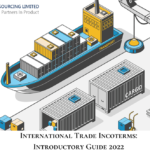Black Friday 2022 and its companion Cyber Monday are already in the rearview mirror, and boy did they both make a splash in the retail world. According to the National Retail Federation (NRF), not only did Black Friday’s in-store foot traffic exceed records. However, the sales figures appear to suggest that Black Friday and Cyber Monday (BFCM) 2022 sales are also breaking records. In fact, Cyber Monday is the largest day of internet sales in US history.
But only some were upbeat in the run-up to retail’s big weekend. Quarterly financial results demonstrated the industry’s ongoing problems with in-store crime, sales volume, inflation, and supply chain problems. Check out a sneak peek of the Black Friday sales statistics if you want to increase the revenue your consumers spend on Black Friday and Cyber Monday sales. In this blog, we’ll also examine and suggestions.

Popular Shopping Categories That Boost Sales During Cyber Week
According to Adobe, the Christmas shopping season will be dominated by three big categories: apparel, groceries, and electronic gadgets. These three generate at least $100 billion in total expenditure in 2022, accounting for over half of all Christmas spending.
- Apparel will earn about $41 billion in sales, a roughly 7% decline year on year.
- As consumers reunite after the pandemic, groceries cost will boost by more than 10% to more than $14 billion by 2021.
- Electronics will account for at least $50 billion in sales, indicating a roughly 3% yearly rise.
How do Supply Chain Challenges and Consumer Uncertainty Drive Record Sales?
Despite 2021’s Christmas shopping season having the highest online sales revenue ever, there are indications of a coming downturn. In addition, an increase in the cost of living caused by a quickly increasing inflation rate will dampen sales figures.As with every year, internet businesses have a head start on the holiday shopping season, which is black Friday. Thanksgiving was the only day to show a rise in expenditure year over year. This implies that, rather than focusing primarily on Black Friday and Cyber Monday, shoppers continued to cross items off their Christmas shopping lists in the run-up to the New Year.
Sales Report 2022: Black Friday vs. Cyber Monday
One probable cause is that brand discounts have shrunk in magnitude. Retailers across all product categories reduced their values over BFCM by an average of 5% due to supply chain disruptions and rising product costs.
Discounting was substantially greater in several areas, such as appliances (-10%), computers (-12%), and electronics (-13%). These products are among the most popular ones among shoppers looking for Black Friday discounts.In comparison to Black Friday; Cyber Monday is a relatively young phenomenon. Before internet shopping became as popular as now, the Black Friday shopping event originated in brick-and-mortar retail businesses.
However, many eCommerce teams find it challenging to decide which day to concentrate their efforts on, given the growing speed of eCommerce and the fact that customers are turning more and more toward digital channels.According to Adobe Analytics, US Cyber Monday online sales summed at $11.3 billion, the most ever on that day, 5.8% higher than Cyber Monday 2021, and 25% more than Black Friday online sales this year. As a result, in 2022, Cyber Monday will be the busiest day for cyber sales.
Compared to the previous year’s BFCM, shoppers spent $9.12 billion online on Black Friday alone, according to Adobe Analytics statistics. This is an increase of more than 2% over last year. Shoppers spent $11.3 billion on Cyber Monday, up about 6% from last year. Between 5 and 6 p.m. EST, the busiest time for Cyber Monday shopping, that works out to nearly $12.8 million spent per minute.The higher conversion rate helped to balance out the fact that Black Friday’s shopping window had more sessions than Cyber Monday’s, resulting in Black Friday’s $8.9B in online sales and Cyber Monday’s $10.7B in 2022.
GBSL’s Outlook: Cyber Monday 2022
The eCommerce sector as a whole is experiencing exciting times. As consumer spending patterns improve and the problems of the past two years disappear, things are ramping up again, and we’re on course for yet another record-breaking year. While the statistics for Black Friday and Cyber Monday sales were undoubtedly different last year, they were also startlingly different this year.
In accordance with GBSL, the introduction of BFCM campaigns by retailers and businesses encourages people to buy at a discount rather than simply discarding their merchandise.
Offering clients exclusive deals and discounts is a savvy marketing strategy that may help establish customer loyalty and encourage repeat business. By providing on-demand discounts to clients who make deliberate purchases rather than impulsive ones on Black Friday, they may take advantage of the market that best fits their buyer’s profile.
Big discounts do not have to be the exclusive goal of BFCM. Whatever you do to celebrate, whether through sales, contributions, or nothing at all, make sure it reflects your values and resonates with customers.





